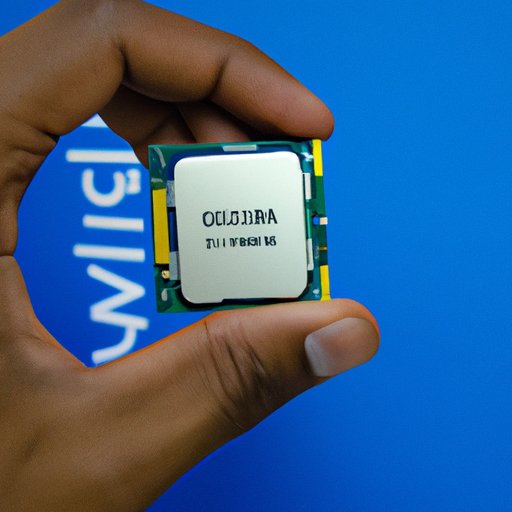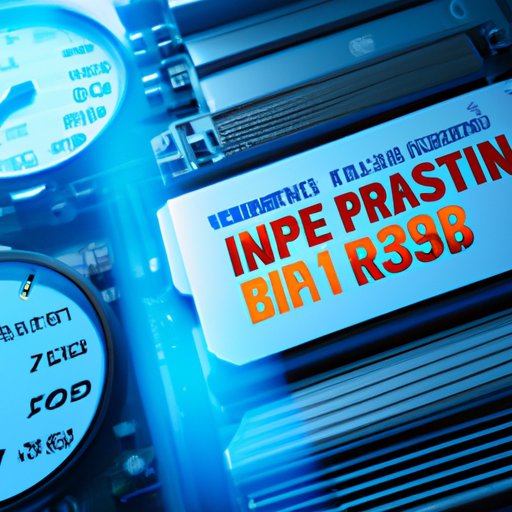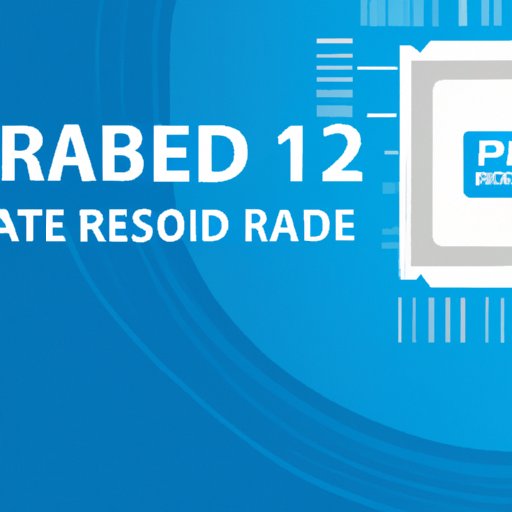Introduction
Intel Rapid Start Technology is a feature that can be used to significantly improve the speed and efficiency of computers. It is a set of technologies designed to enable faster boot times, improved system performance, and increased energy efficiency. This article explores what Intel Rapid Start Technology is, how it works, and how it can be used to optimize system performance.

Exploring Intel Rapid Start Technology: What It Is and How It Works
Intel Rapid Start Technology is a set of tools that allow users to quickly boot up their computers and access their data more quickly. The technology was developed by Intel and is available on several of its processors, including the Core i3, i5, and i7 series. It works by utilizing a combination of hardware and software components that enable the computer to enter a low-power state when it is not in use. This low-power state allows the computer to save power while still keeping critical components such as the processor, memory, and hard drive active.
When the user wants to access their computer again, the Intel Rapid Start Technology will wake up the computer from its low-power state, allowing it to quickly resume where it left off. This process is much faster than traditional booting methods, which can take several minutes to complete. Additionally, Intel Rapid Start Technology allows the computer to remain in a low-power state for extended periods of time, reducing energy consumption and increasing battery life.
Understanding the Benefits of Intel Rapid Start Technology
One of the primary benefits of Intel Rapid Start Technology is its ability to drastically reduce boot times. Traditional booting methods can take several minutes to complete, while Intel Rapid Start Technology can reduce this time to just a few seconds. This makes it ideal for those who need to access their computers quickly, such as gamers or professionals who need to get work done in a hurry.
In addition to faster boot times, Intel Rapid Start Technology also improves system performance. By entering a low-power state when the computer is not in use, the technology reduces power consumption and increases battery life. This can be especially beneficial for laptop users who are often on the go and need their computers to last as long as possible.
Finally, Intel Rapid Start Technology also helps to increase energy efficiency. By reducing power consumption when the computer is not in use, the technology helps to conserve energy and reduce electricity costs. This makes it an ideal solution for those looking to save money on their electricity bills.

A Guide to Installing Intel Rapid Start Technology
Before installing Intel Rapid Start Technology, there are a few prerequisites that must be met. First, the computer must have an Intel Core i3, i5, or i7 processor. Additionally, the computer must have at least 4GB of RAM and a hard drive with at least 40GB of free space. Finally, the computer must have a compatible motherboard and BIOS version.
Once these prerequisites have been met, the user can begin the installation process. First, they should download the latest version of Intel Rapid Start Technology from the Intel website. Next, they should install the software and follow the instructions provided. Finally, they should restart their computer and configure the settings to enable Intel Rapid Start Technology.

Optimizing Performance with Intel Rapid Start Technology
Once Intel Rapid Start Technology has been installed, the user can adjust the settings to further optimize their system performance. In the BIOS settings, the user can adjust the power-saving options to reduce power consumption and extend battery life. Additionally, the user can adjust the sleep timer to determine how long the computer should remain in a low-power state before waking up.
The user can also adjust the boot order to ensure that the computer boots up as quickly as possible. By setting the boot order to prioritize the most frequently used applications, the user can ensure that their computer boots up in the shortest amount of time. Additionally, the user can adjust the hibernation settings to determine how long the computer should remain in a low-power state before powering down.
Comparing Intel Rapid Start Technology to Other Boot-Up Solutions
When comparing Intel Rapid Start Technology to other boot-up solutions, it is important to consider both the advantages and disadvantages of each solution. Intel Rapid Start Technology offers the fastest boot times, improved system performance, and increased energy efficiency. However, it is only available on certain Intel processors, and it may not be compatible with all motherboards and BIOS versions.
Another popular boot-up solution is Windows Fast Startup. This feature is available on all versions of Windows and enables the computer to enter a low-power state when the user shuts down their computer. While this feature does not offer the same level of performance as Intel Rapid Start Technology, it does offer faster boot times and improved system performance. Additionally, it is compatible with all versions of Windows.
Finally, there are also third-party boot-up solutions that can be used to improve system performance and reduce boot times. These solutions often offer additional features, such as the ability to customize the boot order or adjust the power settings. However, these solutions may not be as reliable or as efficient as Intel Rapid Start Technology.
Conclusion
Intel Rapid Start Technology is a powerful tool that can be used to improve system performance and reduce boot times. By utilizing a combination of hardware and software components, the technology can enter a low-power state when the computer is not in use, allowing it to boot up quickly and efficiently. Additionally, Intel Rapid Start Technology is compatible with several Intel processors and can be easily installed with a few simple steps.
When considering different boot-up solutions, it is important to weigh the pros and cons of each option. Intel Rapid Start Technology offers some of the fastest boot times and improved system performance, but it is only available on certain Intel processors. Windows Fast Startup is a more widely available option, but it does not offer the same level of performance as Intel Rapid Start Technology. Ultimately, the best boot-up solution will depend on the user’s individual needs and preferences.
(Note: Is this article not meeting your expectations? Do you have knowledge or insights to share? Unlock new opportunities and expand your reach by joining our authors team. Click Registration to join us and share your expertise with our readers.)
